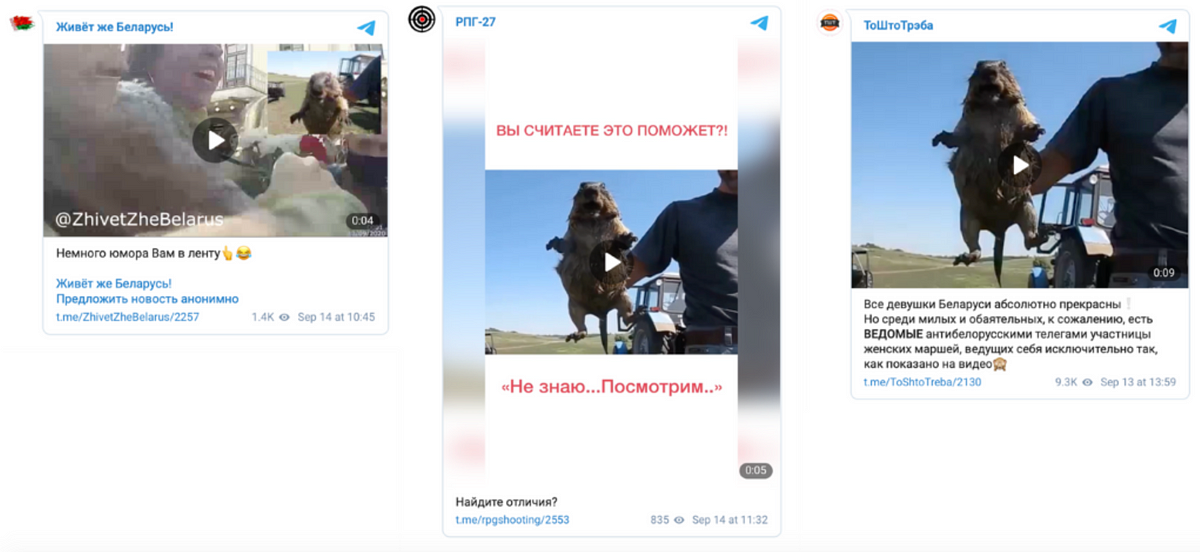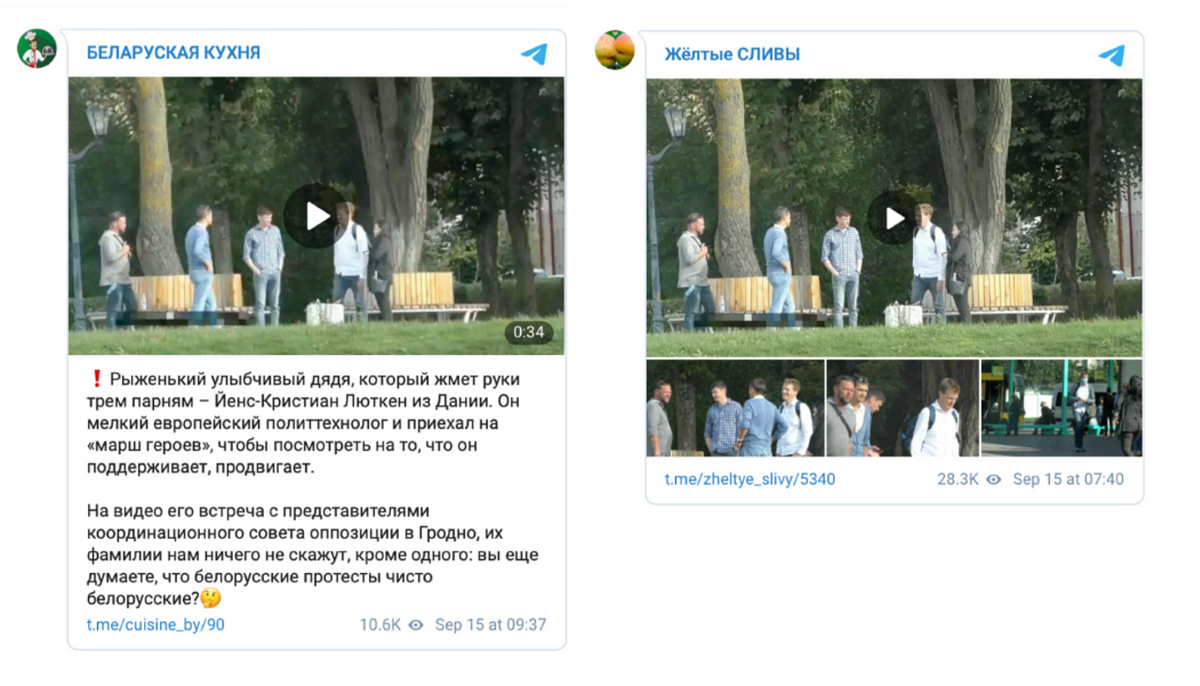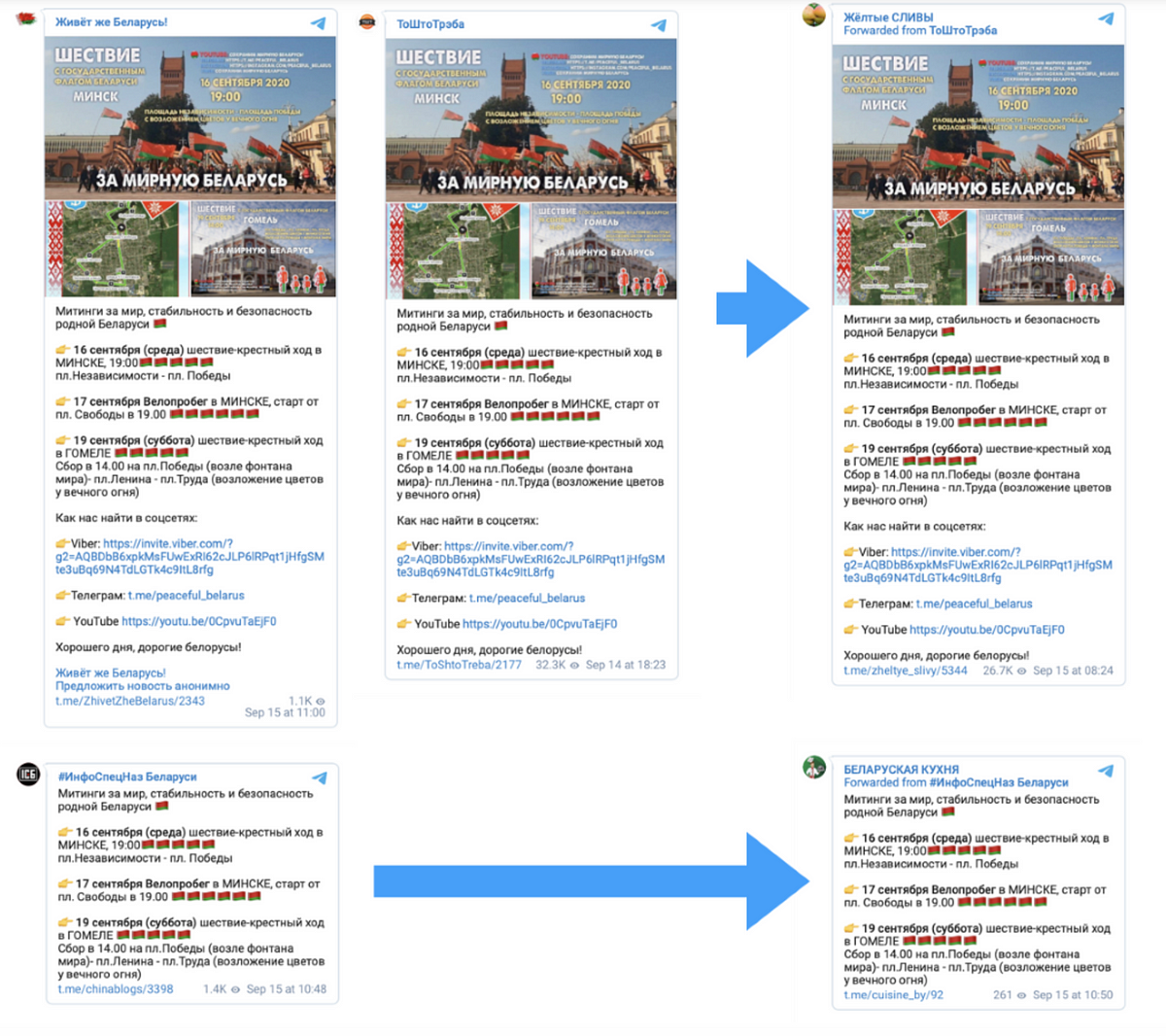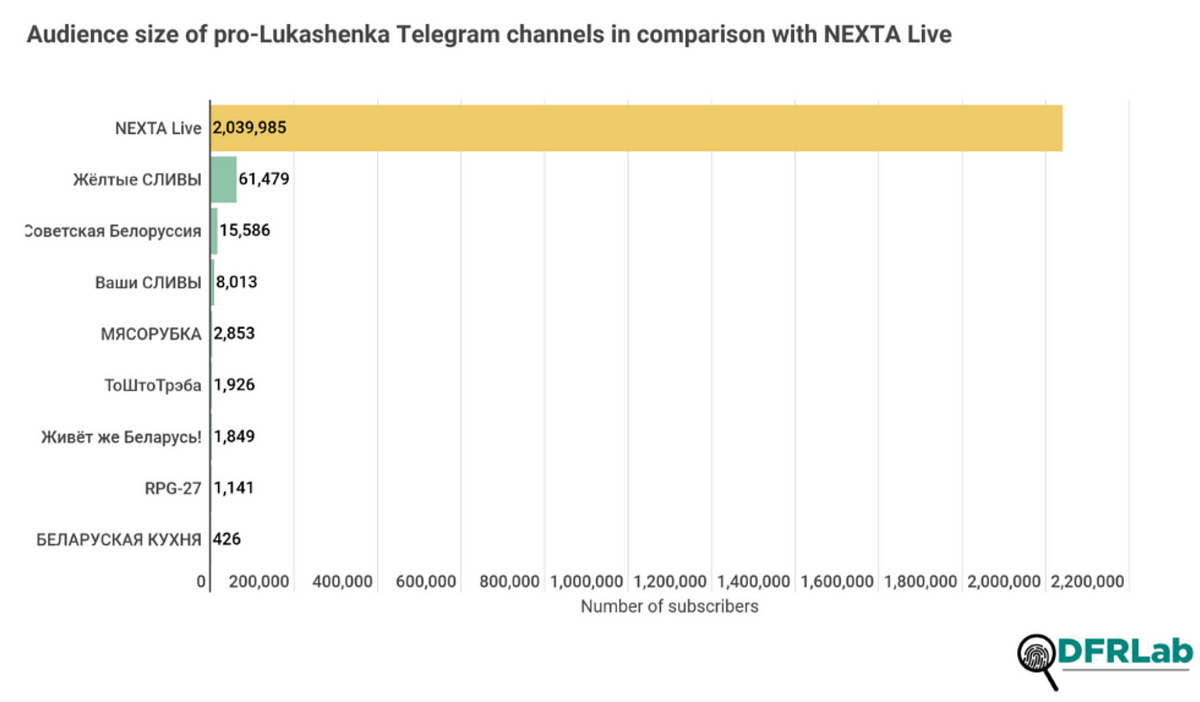Pro-Lukashenka Telegram channels amplify each other to smear protesters
Telegram channels cross-pollinate narratives that attack
Pro-Lukashenka Telegram channels amplify each other to smear protesters

Telegram channels cross-pollinate narratives that attack protesters and promote pro-government rallies

Several Telegram channels supporting Belarusian President Alyaksandr Lukashenka are actively amplifying each other’s content in an attempt to discredit anti-Lukashenka protesters while mobilizing supporters to attend pro-government rallies.
The common narratives portray protests to be coordinated from abroad; that protesters are violent; and that women who participate in the protests are hysterical. The messages share linguistic and visual similarities, and were published within a short timeframe. This suggests a certain degree of coordination among the channels, with the common purpose to de-escalate the ongoing anti-Lukashenka protests.
Telegram has become the central platform for information-sharing amid the internet shutdown initiated by the government on the morning of the elections on August 9, 2020. According to the final election results, the longtime president received 80.1 percent of the vote to opposition candidate Sviatlana Tsikhanouskaya receiving 10.1 percent. The lopsided vote count, the Belarusian people’s distrust in their veracity, and allegations of electoral fraud have led to ongoing protests around the country.
Same visuals to discredit protesting women
Women have emerged as a leading force in the Belarus protests. A pro-government video meme portraying women as hysterical has appeared in at least three anonymous pro-Lukashenka Telegram channels. The meme compares women’s screams with that of a captured marmot. Though shared at different times, and appearing in different forms, the videos clearly gained inspiration from one another.

Same video, same terminology
On the evening of September 13, anonymous pro-Lukashenka Telegram channels Vashi Slivy and Myasorubka published a video showing how anti-Lukashenka protesters were condemning a woman who was cutting off white and red ribbons tied to a railing in a Minsk neighborhood. A man then uses force to take the scissors from the woman. The accompanying text displays the word zmagar (змагар) which means “wrestler” in Belarusian. The following morning, the same video appeared on other anonymous pro-Lukashenka Telegram channels Zhivet Zhe Belarus and Zheltye Slivy.

Videos can easily be disseminated across multiple Telegram channels, as the platform allows users to download them from one channel and repost them elsewhere. The channels expressed similar sentiment about the video — supporting the woman while either condemning or mocking the men — and used the same dismissive terminology for framing the men who did not support Lukashenka.
Claims of collaboration with intelligence services
One re-emerging narratives about the protess is that they are staged and orchestrated by the West. To back this claim, the anonymous Telegram channels Belaruskaya Kuhnya and Zheltye Slivy shared a video showing how Danish politician Jens-Kristian Lutken met with anti-Lukashenka activists in the city of Grodno. The channel Zheltye Slivy provided many details about Lutken’s previous political activities in Belarus and named who he was meeting with.

Lutken discussed his visit to Grodno with the Danish newspaper Berlingske for an article published on September 16. The article discussed how Lutken was unable to visit Belarus by plane during a previous attempt to enter the country, so this time he traveled to Grodno on a tourist bus from the Polish city Bialystok. He was interrogated at the border, but the border guards eventually let him in. Lutken’s intention, according to Berlingske, was to meet “with a local chairman of a smaller opposition party.” The article also quoted Lutken about his arrival, who explained, “From a long distance we could see someone from the intelligence service keeping an eye on us. So we had to shake them off.”
A couple hours later, the same video was amplified by the pro-Kremlin Twitter account @veselchak555 and the news site News-Front. The Zheltye Slivy Telegram post appears to be the original source of the video.
Organizing pro-Lukashenka rallies
The aforementioned pro-Lukashenka Telegram channels, along with one called #InfoSpecNaz Belarusii, posted or amplified calls to rallies in support of Lukashenka’s regime, describing them as a “Rally for peace, stability and security of native Belarus.” Reviewing the timestamps and the shared language of each post, it is possible to chart how they were picked up by one channel after another, all pushing attendance at these pro-Lukashenka rallies.

Audience size
While the number of pro-Lukashenka Telegram channels has multiplied, their audience size is dwarfed when compared to NEXTA Live, the most popular anti-Lukashenka Telegram channel, even when considered collectively. NEXTA Live currently boasts more than 2 million members, while its closest pro-Lukashenka competitor, Zheltye Slivy, has less than 62,000 members.

Though hostile and coordinated to a certain degree, the pro-Lukashenka Telegram channels fail to attract the meaningful number of subscribers, but the ongoing effort may move the needle against Belarus protest movement if these channels ever manage to develop a competitively sized audience.
Nika Aleksejeva is a Research Associate, Baltics, with the Digital Forensic Research Lab.
Follow along for more in-depth analysis from our #DigitalSherlocks.

